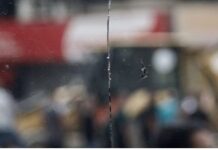Bel Trew
The Independent / September 2, 2021
Earlier this year, it looked as though Gaza’s efforts to tackle pollution had borne fruit, after a damning UN report in 2012. But recent conflict has obliterated any progress, writes
In early May, Gaza’s top water officials did a tour of new facilities and declared that the hard work had paid off: Gaza could no longer be considered “uninhabitable” because of its water and sewage crisis.
A week later, a devastating 11-day war between Palestinian militants and Israel’s army erupted, and that notion quite literally blew up.
Home to 2 million people, Gaza has suffered under a 14-year long Israeli and Egyptian blockade in place since the militant group Hamas violently seized control of the strip. Since then, four wars between militants and Israel have also battered vital infrastructure.
Worrying levels of pollution in the sea, ground and aquifer, as well as crippling electricity shortages and crumbling infrastructure meant that 97 percent of Gaza’s water was undrinkable. A 2012 United Nations report went as far as to say that by the year 2020 the entire 25-mile-long territory would be “unliveable”.
However, international and local projects have over the years seen the construction of new desalination and sewage plants and other infrastructure despite the tight restrictions on bringing materials into the strip. According to Monther Shoblaq, head of Gaza’s coastal municipality water utility, things were looking up – that was, until war came again.
“It’s painful that we got to that point after so much work, and then it just got destroyed,” Shoblaq told The Independent back in May shortly after a shaky truce had been enforced, as teams assessed the extent of the damage.
“I used to talk about hope and optimism and in a few weeks it collapsed.”
Three months after the end of the fighting, which killed over 260 Palestinians and 13 Israelis, the long process of reconstruction has begun. But the United Nations’s child agency UNICEF told The Independent that progress was slow and it was hard to get supplies, with the result that Gaza’s water and wastewater systems remain badly damaged.
In total, the devastating conflict inflicted $380m (£275m) worth of physical damage on Gaza (and $190m in economic losses), according to the World Bank. Of that, almost $14m worth of damage is in the water, sanitation and hygiene (WASH) sector.
UNICEF says 290 facilities need repair in total, including 170 water facilities, almost 110 wastewater facilities, and at least 10 storm-water facilities.
It’s painful that we got to that point after so much work, and then it just got destroyed
Munthar Shoblaq, head of Gaza’s Coastal Municipality Water Utility
It has meant that domestic water supply to residents decreased by 50 percent, a UNICEF representative said.
Oxfam told The Independent that funding had also been an issue. While some money has been raised, $12m was still urgently needed.
“[The damage] has left many vulnerable families without a clean water supply. As a consequence, families are using their limited cash to pay for expensive water delivery, without which they would have no drinking water in their home,” said Mohammed Ammar, Oxfam’s humanitarian programme manager for the Palestinian occupied territories and Israel.
“The lack of fully operational wastewater facilities contributes to the 100,000 cubic metres per day of raw sewage being pumped into the Mediterranean, polluting the sea and contaminating fish stocks.”
Before the conflict, some of Gaza’s beaches had been declared safe for swimmers, after years of being so toxic that swimmers had developed illnesses and, according to some unconfirmed reports, even died.
But some of these beaches are once again no-go areas.
Checking back in with Shoblaq after assessments were completed, he said physical damage to facilities from the 11-day war meant that for almost two weeks 70,000 cubic metres of completely untreated sewage was pouring into the sea every day.
That has since been stemmed. But he added that they also had to dump 330,000 cubic metres of raw sewage in a lake in the north of the country as a main sewage pipeline to the recently inaugurated north Gaza sewage treatment plant was also bombed.
“This has basically polluted the ground and gone into the aquifer,” from which Gaza’s water supply is drawn, he added.
It is not only physical damage contributing to Gaza’s pollution woes. Some wastewater treatment plants stopped working because of Gaza’s chronic electricity shortages made worse by the conflict, according to the International Committee of the Red Cross (ICRC). During and immediately after the conflict, most of Gaza was only getting four hours of power a day.
Not only does this pollute the sea, it contributes to the faster spreading of antibiotic-resistant bacteria, which endangers the health of people in Gaza and beyond in Israel, the ICRC’s report warned.
There is an urgent need to import some materials, especially for WASH and other reconstruction projects
Mira Nasser, UNICEF
The UN told The Independent this was why there was “an urgent need” to import materials into the strip, where many items are banned by the Israeli army, who say they could have dual use as weapons for militants.
“In some instances, it takes up to 60 days to get authorisation to deliver materials,” UNICEF’s Mira Nasser told The Independent.
“There is an urgent need to import some materials, especially for WASH and other reconstruction projects.”
Anger and desperation in Gaza at the slow progress and the blockade has even seen the resumption of protests that raged through much of 2019 near the border fences with Israel. That recently boiled over into violent confrontations. Gaza’s health ministry said on Saturday that the Israeli army shot a Palestinian who later died of his injuries, while Israel said an Israeli policeman was critically injured after being shot from point-blank range by live fire from rioters.
In response, the Coordinator of Government Activities in the Territories – the Ministry of Defence body in charge of Israel’s crossings with the Palestinian territory – has said that it would ease some restrictions from Thursday.
It said it would increase imports of new vehicles, goods and equipment for civilian projects and issue more permits for Gazan businessmen to enter Israel “conditional upon the continued preservation of the region’s security”.
The body added that those restrictions could be eased further if the security situation improved.
The Independent reached out to the Israelis for further comment but did not receive a reply.
However, Gaza’s environment ministry told The Independent it wasn’t just water and sewage causing problems, and that they were concerned about air pollution due to factories catching fire after being hit by projectiles.
Bahaa Alagha, from the ministry, told The Independent hundreds of tonnes of hazardous material had burned, sending toxic plumes into the sky, but “because of the blockade [they] lack equipment to properly measure the damage”.
Jawat al-Khoudary, 62, who owned FoamCo, which was among the factories that were set alight, told The Independent at the time it was so toxic “you couldn’t stand even 100 metres from the area because of the poisonous gases”.
Hani Khder, 37 who runs a company that stored agricultural chemicals and also caught on fire apparently from Israeli smoke grenades, said the water that put out the flames drained into the local sewage system and poisoned people in the surrounding area.
“I don’t know what to do with the remaining chemicals. Do I put them in the sea?” he asked.
All of this together is worrying many as Gaza still grapples with the Covid-19 pandemic and a battered healthcare system.
Shoblaq was upbeat despite the challenges but warned that they still did not know the extent of the destruction.
“It will take time to find the unseen damage from the ground shaking due to ground-penetrating weapons used,” he said.
“But we are working on it.”
Bel Trew – correspondent in Jerusalem












